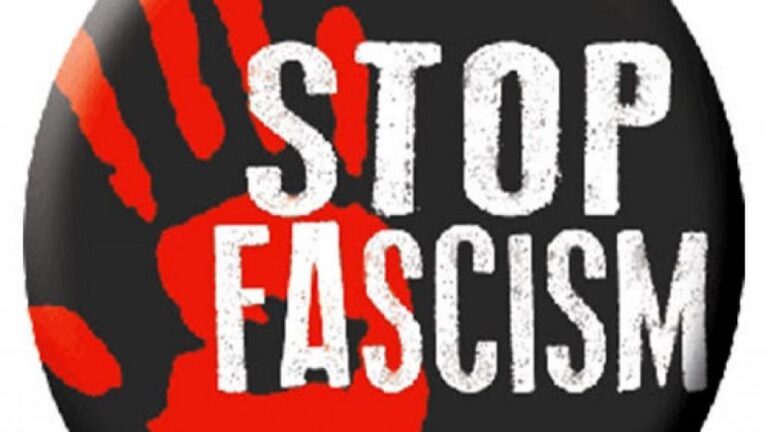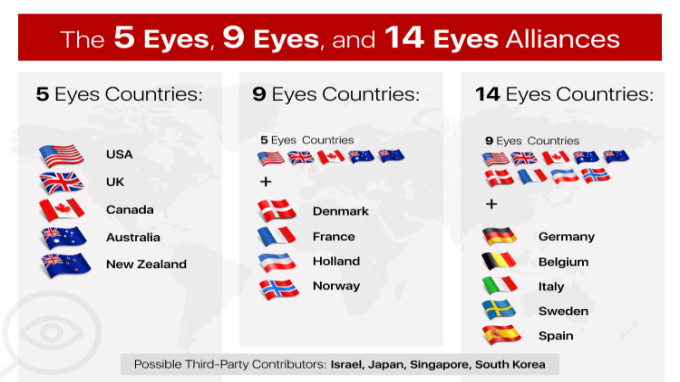Book Excerpt—On the Brink: Trump, Kim, and the Threat of Nuclear War
North Korean Strategic Thought:
Before turning to the evolution of Obama-era strategy toward North Korea, this chapter offers an essential primer on how North Korea thinks about coercion and its nuclear weapons—to the extent that we know—and the kinds of dangers that arise therefrom. Some of what we know about North Korean strategic thinking and its intentions comes from defector testimonies after fleeing to China or South Korea, though we often cannot take their claims at face value. Some of it comes by fiat, from public statements by government officials privy to intelligence reports that the public never gets to see. If enough policymakers say the same thing enough times across enough presidential administrations, then there must be something to it. But much of what we know comes from inferences drawn either deductively, from the structure of the situation, or inductively, from “Pyongyangology,” that is, parsing North Korean words and deeds for hidden meaning. Either approach involves a certain amount of educated guessing. When it comes to claiming anything meaningful about North Korea, therefore, acknowledging a margin of uncertainty is healthy. US officials called on to make choices about Korea are faced with uncertainties and risks at every turn. This has always been the case with North Korea, but nuclear weapons have changed the character of those uncertainties and risks, largely for the worse.
The role of nuclear weapons in North Korean strategic thinking must be distinguished from the motivation that first led them to pursue nuclear weapons. Even recognizing that the foremost purpose of North Korea’s arsenal is for security, we need to understand how North Korea believes nuclear weapons help it achieve security. After all, anything the United States does regarding the threat or use of force should depend on how it expects North Korea to respond, which in turn depends on the strategic beliefs of Kim Jong Un and North Korean military elites. In this chapter, therefore, I take on two tasks. The first is to articulate how North Korea thinks about coercion generally. Whether and how North Korea would use weapons in a crisis or conflict depends to a great extent on its “theory of victory”—a term of art among nuclear scholars that describes beliefs about coercion; how force and the threat of force achieve security goals. Nuclear weapons have to fit within prevailing sensibilities and beliefs that elites share about the relative merits of force. A “theory of victory” tells us what those sensibilities and beliefs are.
The second task of this chapter is to explain how, given its theory of victory, the presence of North Korean nuclear weapons generates risks distinct from those posed by a non-nuclear North Korea. Rather than claim that North Korean nuclear strategy hews to one ideal-type approach over another, I explain the variety of ways North Korean nuclear weapons introduce new and sometimes counterintuitive risks.
North Korea’s Theory of Victory: Offensive, Reputational
Koreans have many proverbs and sayings for which they are famous, but one of the most common, especially in military and security circles, is the rather self-explanatory “I die, you die.” It is the emotional corollary to North Korea’s often used strategy of brinkmanship in threat-making and bargaining; getting what you want by exploiting your willingness to annihilate yourself over principle. It does not mean, however, that North Korean elites or Kim Jong Un are suicidal; they are not. Self-preservation is as important for the Kim regime as it is for anyone. But there are two problems that make North Korean self-preservation manifest differently than for other states.
The first is that the North Korean people have been heavily conditioned over time to expect a future war. As Pak Su-hyon, a North Korean who defected to the South in 1993 and served in Kim Il Sung’s personal security service, told journalist Bradley Martin in 1995, “The problem is, people want war. They believe they are living this hard life because there’s going to be a war . . . They believe they’ll die either way, from hunger or war. So the only solution is war.” The anecdote was offered at a time that North Korea was suffering an extreme famine, but it is indicative of a more general mind-set resolved to the eventuality of war, echoing through time.
That echo was heard even in 2017, when The New Yorker ’s Evan Osnos visited North Korea and his host from the Foreign Ministry repeated a version of it: “Three million people have volunteered to join the war if necessary . . . in terms of dignity we are the most powerful in the world. We will die in order to protect that dignity and sovereignty.” Statements like these, as well as much of North Korean history, suggest that the North Koreans would rather accept a war than capitulate—or even be seen as capitulating—to outside pressure on matters that they see as being of existential importance. The practical consequence of this fatalism about a future war at the popular level is that the regime can plausibly lead its people into a conflict without alienating or being deposed by the people. As long as it does not lead to externally imposed regime change, a war could actually play very favorably in the domestic politics of the Kim regime. Thus, whereas political scientists sometimes conceive of popular will as a constraint on the ability of leaders to make war, in North Korea, not only is popular will not a constraint on war, it may actually encourage it under certain circumstances.
The second, more important, problem is that the regime exhibits peculiarly dangerous beliefs about the role of threats and military violence for self-preservation. North Korea under the Kim dynasty has always believed in the imperative of the offense : that clear shows of hostility and resolve (i.e., a willingness to take risks and die) are necessary to deter enemy aggression. It also believes that adversarial reputations matter a great deal: North Korea expects that adversaries will judge its future resolve based partly on what it does in the present moment; small actions of toughness or weakness can therefore have exaggerated consequences in the future. When you combine these twin beliefs (the merits of offense and importance of reputation) suddenly the history of North Korea’s threats and uses of force makes much more sense.
Take, for instance, the private statements of senior North Korean officials to Soviet counterparts in the wake of North Korea’s shooting down of the US EC-121 reconnaissance aircraft on April 15, 1969. The attack, which killed all 31 Americans on board, was the most aggressive North Korea had ever launched against the United States outside the Korean War. Heo Dam, North Korea’s Deputy Foreign Minister, told the Soviet Ambassador to Pyongyang, North Korea is “ready to respond to retaliation with retaliation, and total war with total war,” and that the Americans “did not draw the proper lesson from the Pueblo,” referring to North Korea’s capture of a US naval intelligence vessel and its crew the year prior. Heo implied that the United States should have learned about North Korea’s willingness to take such actions because the seizure of the Pueblo demonstrated it. In effect, North Korea was using violence to socialize the United States to expect certain consequences under certain conditions. Soviet Ambassador Sudarikov followed this conversation with a similarly toned exchange with North Korea’s Foreign Minister Pak Seong- Cheol. Pak told Sudarikov:
If the Americans had decided to fight then [when the EC-121 was shot down], we would have fought . . . we wage firefights with the Americans in the area of the 38th parallel almost every day. When they shoot, we also shoot . . . But no special aggravation arises from this . . . we’ve also shot down American planes before, and similar incidents are possible in the future . . . It’s good for them to know that we won’t sit with folded arms . . . If we sit with folded arms when a violator intrudes into our spaces, two planes will appear tomorrow, then four, five, etc. This would lead to an increase of the danger of war. But if a firm rebuff is given, then this will diminish the danger of an outbreak of war. When the Americans understand that there is a weak enemy before them they will start a war right away. If, however, they see that there is a strong partner before them, this delays the beginning of a war.
Notably, these words were shared in private with a Soviet patron who was trying to understand why North Korea would provoke the United States with violence and warning of the danger of doing so. This makes them more credible and more revealing than public statements intended to influence the United States. They also illustrate North Korea’s offensive, reputational beliefs about the efficacy of coercion. When Pak states that “if we sit with folded arms . . . this would lead to an increase of the danger of war. But if a firm rebuff is given, then this will diminish the danger of an outbreak of war,” he is articulating the core theory of North Korean coercion: North Korea believes going on the offensive prevents the United States from invading. In other words, showing strength and resolve prevents war, while showing weakness invites war. Pak’s justification of recurring friction along the DMZ conveys similar thinking: to North Korea, the accumulation of sporadic small-scale clashes with the enemy actually prevents war because it ensures that the enemy will judge North Korea as having firm resolve in the future. Small acts of aggression have exaggerated payoffs.
Kim Il Sung communicated a complementary rationale to Romanian dictator Ceaușescu in 1971, explaining North Korea’s provocations in terms of the expectation that the United States would not retaliate because it showed an unwillingness to do so in the past: “Americans don’t want to continue this fight. The Americans let us know [through their inaction] that it’s not their intention to fight the Koreans again.” Kim Il Sung judged the United States on its track record, just as he expected the United States to judge North Korea based on its track record. North Korea’s twin beliefs, in offense and adversary reputation, are the only plausible explanation for the otherwise puzzling historical pattern: why a much weaker North Korea has attacked much stronger US and South Korean adversaries hundreds of times since the 1960s. For a small power to repeatedly attack a larger power without being suicidal, it must expect that the larger power will not exploit its superior power; North Korea made that inference about the United States during the Cold War, based on the latter’s track record of restraint.
North Korea’s offensive, reputational thinking about threats and violence is not confined to the Cold War. We find the same pattern of thought and action emerging between North Korea and the United States in the 1990s, and in crises as recent as 2010. North Korea repeatedly used small-scale, limited acts of violence for political ends that were much bigger than warranted by the acts themselves, attributing outsized effects (deterrence of America) to their deliberate accumulation of friction: “it’s good for them to know that we won’t sit with folded arms,” as North Korea’s foreign minister told the Soviet ambassador. In 2002, North Korea’s lead negotiator, Deputy Foreign Minister Kang Sok Ju, expressed the other side of this belief, telling US Assistant Secretary of State James Kelly that “If we disarm ourselves because of US pressure, then we will become like Yugoslavia or Afghanistan’s Taliban, to be beaten to death.” Showing weakness invites war all the same, but on less favorable terms than if it drew first blood.
Moreover, a rare quantitative study examining North Korea from 1997 to 2006 found that when the United States displayed more aggressive international intentions toward other adversaries, as with the 2003 invasion of Iraq, North Korean vitriolic rhetoric would surge, not diminish. In these instances, North Korea could have gone mute and largely stayed out of view while the United States focused its ire on others. Instead, it opted for a rhetorical posture of effectively warning the United States off of bringing its hawkish propensity to the Korean Peninsula. This is consistent with the prevailing North Korean view that offense is the best defense. When Evan Osnos visited Pyongyang in 2017, one of his hosts, the vice-president of the Institute for American Studies (a regime-run think tank), hinted at the oft-heard origin of such thinking: “Historically, the Korean people have suffered because of weakness. That bitter lesson is kept in our hearts.” Kim Jong Il told former President Bill Clinton much the same when the two met in 2009, a meeting I will discuss at length in the next chapter. Kim claimed his “military-first” policy, which involved going on the offensive at times, “had nothing to do with hostility,” but rather with deterrence: “The DPRK was a small country surrounded by giants. The Korean nation had suffered Japanese occupation . . . the purpose of the military-first policy was not to attack others but to prevent other countries from attacking the DPRK.” Internalized narratives about their own experience lead them to believe that even small projections of resolve help keep enemies at bay.
Over time, then, North Korea has expressed in word and deed that taking calculated risks is how it believes a smaller power survives amid threats from much larger enemies. The risks it decides to take flow from this offensive, reputational understanding about the utility of threats and the “diplomacy of violence,” to borrow a phrase from strategic studies pioneer Thomas Schelling. When North Korea’s Foreign Ministry stated on December 7, 2017 that war with the Trump administration had become an “established fact . . . The remaining question now is: when will the war break out?” they were expressing a fatalism with roots in their strategic thinking. Virtually everything of consequence that North Korea says and does draws on antecedent narratives and stock beliefs that it has nurtured over time. The way North Korean officials think about coercion in particular makes it highly unlikely that they respond to anything they perceive as unprovoked pressure with anything but pressure in kind, even if such a response triggers war. This does not mean that North Korea is “undeterrable,” or that North Korea can never be struck without leading to a war. But unprovoked attacks, attacks that make the regime’s leadership appear weak or irresolute, or attacks that appear to the regime as a prelude to a larger military campaign, will generate retaliation and escalation. To North Korea, the failure to respond to pressure with pressure will bring war just as surely as an escalating spiral of retaliation, so they have scarcely any alternative to hitting back if they are hit first. In this context, whatever additional legitimacy or economic benefits nuclear weapons may provide, nothing could be more valuable than a weapon that allows North Korea to make good on its emotional and strategic need to ensure that “I die, you die.” This theory of victory matters because it is the context within which North Korea makes decisions about nuclear weapons.
Risks of War, Nuclear and Otherwise
At the time of writing in 2018, North Korea was a de facto nuclear weapons state, and the destructive capacity and survivability of its nuclear arsenal improved every year leading up to the nuclear crisis. Between 2006 and 2017, North Korea conducted six nuclear tests, gradually increasing the yield of the blasts. North Korea claimed its sixth test, on September 3, 2017, was a hydrogen bomb, the nuclear yield (around 100 megatons) of which was several times greater than the bombs dropped on Hiroshima and Nagasaki together in 1945. The blast yield made the claim at least plausible. Through iterations of research, development, and testing, North Korea has improved its ability to deploy ever larger destructive nuclear yields. Crucially, it also improved its ability to miniaturize nuclear devices to fit on delivery vehicles like ballistic and cruise missiles.
One would be forgiven for asking how North Korea’s nuclear weapons makes the situation on the Korean Peninsula more dangerous than the ever-present danger of decades past. Even without a nuclear arsenal, North Korea has so much long-range artillery targeting South Korea’s capital, Seoul, that it could destroy most of it in a matter of hours. It also has a large chemical weapons stockpile, and has not acknowledged any particular taboo around the use of chemical weapons. North Korean agents used a chemical weapon to assassinate Kim Jong Un’s older brother in 2017 at Kuala Lumpur International Airport. If Kim could use such weapons against his own brother, we should also expect them to be used in the event of open conflict. And North Korea’s military, despite being comprised of Soviet era equipment, is the fourth largest in the world and enjoys all the natural advantages that come with fighting in home territory. But the introduction of nuclear weapons can heighten dangers in new and sometimes counterintuitive ways. Nuclear weapons limit what adversaries wishing to avoid nuclear war can do to North Korea. They increase the upper-end costs of misperception, miscalculation, and worst-case scenarios. They grant North Korea greater optionality in pursuing non-nuclear coercive violence, making North Korean offensives more difficult to predict, defend against, and deter. And they may embolden North Korean officials to adopt more aggressive strategies in the pursuit of political goals.
Image: Reuters
By Van Jackson
Source: National Interest







